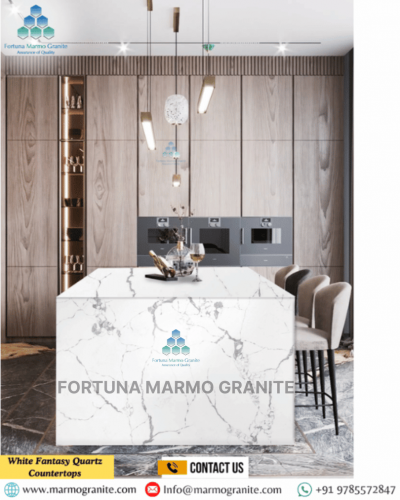Top Quartz Supplier from India to Poland: Quality Stone, Global Reach
In today's design-driven world, engineered quartz. has become one of the most sought-after materials for modern homes. and commercial spaces. Known for its strength, low maintenance. and stylish appearance, Moreover, quartz is widely used for countertops, flooring, wall cladding. and backsplashes.
Moreover, With the rising demand in Europe—especially. in Poland—Indian quartz suppliers are delivering top-quality slabs. that combine advanced technology with skilled craftsmanship. Yet, The result is durable, elegant, and consistent quartz surfaces. that meet global standards. Indian suppliers not only provide exceptional quality but also ensure cost-effectiveness. handling both large-scale and custom orders efficiently.
In addition, Trusted by Polish builders, designers. and homeowners, Indian quartz has earned a reputation for reliability, trendy designs. and long-lasting performance. This growing trade highlights the strong connection between India and Poland. as quartz moves seamlessly from Indian factories. to Polish interiors—bringing together style, durability, and value.


The Rise of a Global Powerhouse: Why India Leads the Quartz Industry
- Abundance of Raw Materials: Moreover, Engineered quartz contains over 90% natural quartz. one of Earth's most abundant minerals. India's geological richness ensures. a steady and high-quality supply of this raw material. Major reserves are found in Rajasthan, Andhra Pradesh, and Tamil Nadu. Large quarries in these regions provide premium grits and powders. In addition, This reliable domestic availability reduces import dependence and lowers logistics costs. As a result, Indian quartz products remain highly competitive in global markets.
- State-of-the-Art Technology: Indian manufacturers have invested heavily in cutting-edge technology. especially automated production lines, with many adopting world-renowned processes like Italian Bretonstone technology. This advanced machinery ensures precise mixing of quartz. resins, and pigments under controlled vibration and pressure, resulting in uniformly dense, non-porous. and flawlessly consistent slabs. As a result, Indian engineered stone products meet the most. stringent international quality and performance standards. positioning them as the gold standard in the global market.
- A Skilled and Innovative Workforce: India's manufacturing sector thrives on a highly skilled and adaptable workforce. Engineers expertly handle complex machinery, while artisans focus on perfecting the final aesthetic details. With this balance, Indian professionals remain at the forefront of the industry. Their blend of technical expertise and creative craftsmanship not only ensures consistent production of standard products but also drives innovation. This allows companies to deliver unique, bespoke designs that cater to the evolving tastes of global markets.
The Hallmarks of Indian Quartz: Uncompromising Quality and Aesthetic Brilliance
- High Quartz Content: The best slabs contain 90-95% natural quartz, which gives them their incredible hardness and scratch resistance.
- Low Resin Content: A well-engineered slab uses just enough high-quality resin (5-10%) to bind the quartz particles without compromising the stone's integrity. Too much resin can lead to issues with heat resistance and durability.
- Non-Porous Surface: The high-pressure compaction process eliminates microscopic pores, making the surface completely non-porous. This is a crucial feature, as it prevents liquids, stains. and bacteria from penetrating the stone. making it exceptionally hygienic and easy to clean.
- Certifications: Leading Indian suppliers often hold international certifications like ISO (for quality management), NSF (for food-grade safety), and Greenguard (for low chemical emissions), providing a global guarantee of quality and safety.
Indian quartz stands out not only for its strength but also for its rich variety of colors and patterns. From timeless whites like "Statuario Fantastico" to elegant options such as "Calacatta Gold" with bold grey veining, suppliers provide designs that rival marble and granite. Unlike natural stone, quartz ensures uniformity in color and pattern, making it the perfect choice for large projects where a seamless, consistent look is essential.
Bridging Continents: The India-Poland Connection
- Direct Access to Top-Tier Products: Polish distributors and B2B clients source directly from the origin. By bypassing middlemen, they ensure product authenticity and gain greater supply chain transparency.
- Cost-Effectiveness: India offers competitive manufacturing costs and efficient export operations. As a result, suppliers provide premium quartz at lower prices than traditional European suppliers. This value attracts both residential and commercial projects.
- Reliable and Timely Supply: Indian exporters have fine-tuned their logistics to meet the demands of European clients. With well-defined production schedules and strong communication channels, they ensure a consistent flow of materials, mitigating the risk of project delays.
Seamless Global Logistics: From Indian Ports to Polish Warehouses
Moreover, The India-Poland quartz trade relies on strong logistics. with sea freight as the main transport mode. Quartz slabs are securely packed in A-frames inside 20-foot containers for safe delivery. In addition, Major Indian ports like. Mundra and Chennai connect to Polish ports such as Gdansk. Gdynia, and Szczecin, ensuring a smooth supply chain and on-time shipments.
Moreover, a vital step in this process is the "last mile" delivery. Here, Indian suppliers work with trusted European freight forwarders to handle customs clearance. and inland transport smoothly. They manage key documents like the Commercial Invoice. Bill of Lading, and Certificate of Origin to avoid delays and ensure compliance. With precise coordination. they guarantee smooth customs processing and on-time delivery. to a distributor's warehouse or project site. This makes the process efficient and stress-free for Polish importers.
Beyond the Countertop: The Versatility of Indian Quartz
Bathroom Vanities and Wall Cladding: Quartz is ideal for bathrooms. It resists moisture, mildew, and stains.
Flooring and Wall Panels: Its durability and uniform finish suit high-traffic spaces such as homes, airports, and hotels.
Reception Desks and Commercial Surfaces: Quartz supports large, seamless designs. It is a popular choice in modern commercial interiors.
Furniture and Decorative Objects: It can be crafted into tables, shelves, and décor pieces, adding elegance and luxury.
Conclusion
Indian Granite Supplier The trade relationship between India and Poland in the stone sector is thriving. with quartz leading the way in modern design and construction. As Polish demand for durable and stylish quartz surfaces grows, Indian suppliers. are meeting it with precision and quality. Among them, Fortuna Marmo Granite stands out as a top quartz supplier from India to Poland. offering premium-grade products backed by advanced manufacturing, market expertise. and a commitment to excellence.
Fortuna Marmo Granite ensures that each shipment—whether slabs, tiles, or custom-cut quartz pieces. meets the highest standards of precision and quality. Our global logistics capabilities and customer-centric approach make it easy for Polish buyers. to access a diverse and reliable range of quartz products. that not only enhance architectural beauty but also offer long-term value. As a trusted partner for architects, builders, wholesalers, and distributors across Poland. Fortuna Marmo Granite is proud to be at the forefront of this thriving export corridor. reinforcing our mission to connect India's finest engineered stones with the world.

